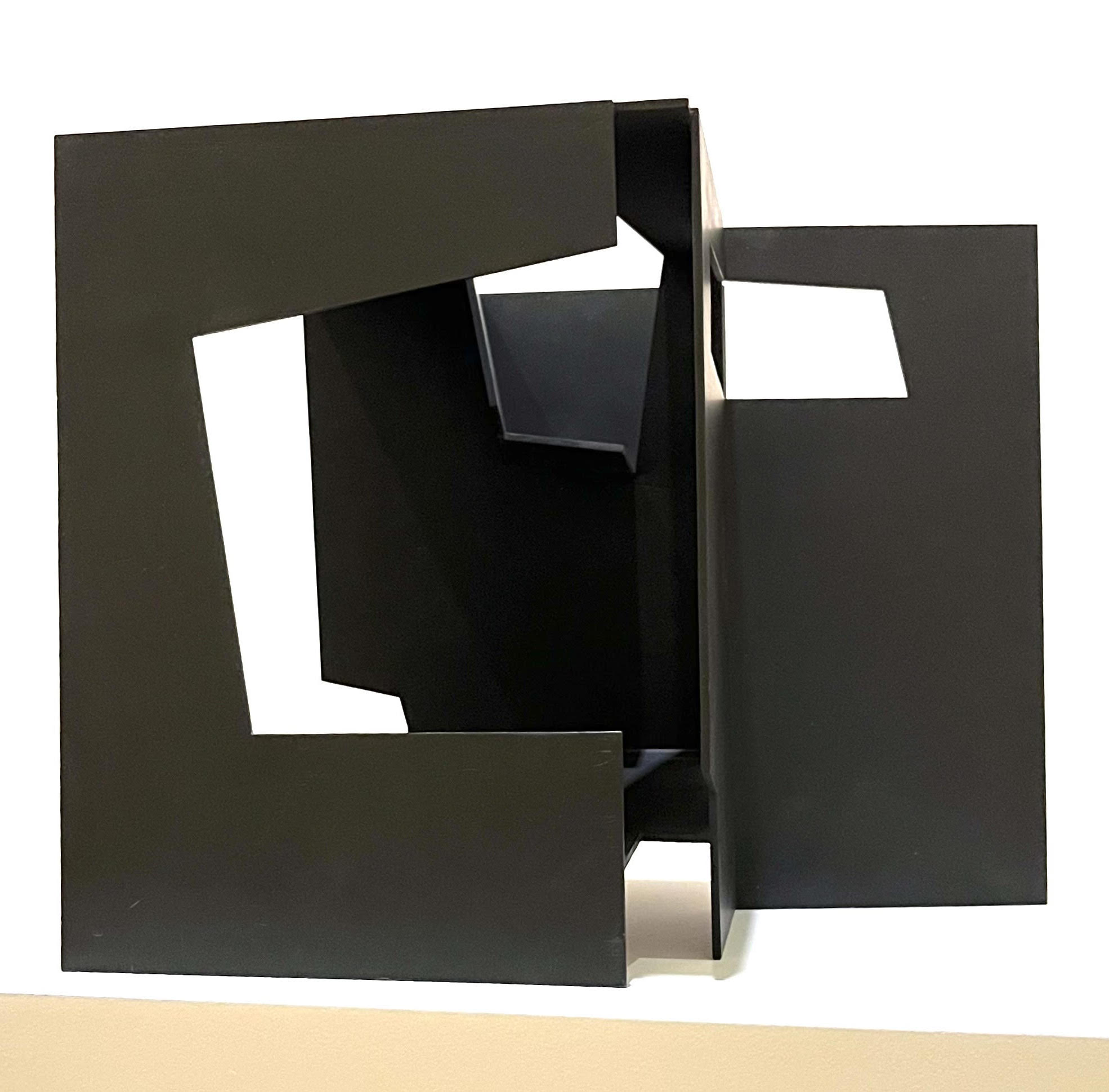
On a recent trip to Bilbao, Spain, I was taken by the work of Basque artist, designer and writer Jorge Oteiza. I was particularly impressed by a series of sculptures that explored space or rather the void. Oteiza’s work has always been enveloped in a spiritual aura. In the early 1950s he accepted a commission to produce statues for the new Basilica in Arantzazu.
He used this opportunity to explore the notion of a new aesthetic spirituality based on abstract spatial innovations. He began the commission in 1952, but by 1954 the church had banned his work. Unable to complete the commission he turned his attention to a series of smaller experiments with the goal of activating space through the use of emptiness and stillness — like the one shown here.
This work has clear spiritual motivations expressed through emptying out simple geometric bodies. There are several philosophical and spiritual traditions that deal with “emptying.” For example, the term sunyata — emptiness or voidness — is a philosophical idea shared by Hinduism, Jainism and Buddhism. Although this concept has multiple complex meanings, it is often tied to a meditative state where one empties their mind to achieve emotional detachment. In contrast, the Christian notion of self-emptying requires deep attachment and engagement.
The term kenosis refers to the act of relinquishing one’s divine attributes. This idea was ultimately manifest in Christ, who humbled himself by taking human form and serving as a willing sacrifice for humanity. Early church teaching went further and implored followers to be like minded and selfless, putting others’ needs above their own.
Oteinza’s sculptural work and writings had an enormous impact on modernism as well as other artists such as Richard Serra. In 1959 at the pinnacle of his career — having recently been awarded the first prize for Sculpture at the São Paulo Biennial — he unexpectedly announced that he would abandon his sculptural pursuits. He explained that the purpose of art was not the art object but rather the formation of the artists themselves, and not to merely elevate the artist but rather train them to engage society directly. This shocking announcement was a powerful expression and perhaps the perfect culmination of his sculptural investigation — an arguably humble, self-emptying act.
